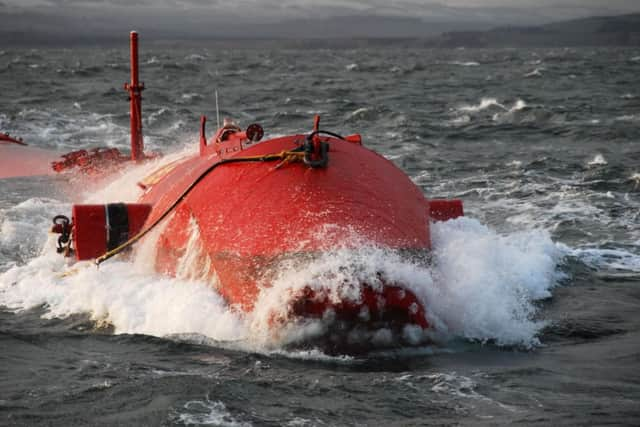Pentland Firth tides ‘can power half of Scotland’


Research has revealed that tides in the Pentland Firth, between the mainland and Orkney, have the potential to generate 1.9 gigawatts of electricity, enough to meet the needs of more than a million households.
Engineers from the universities of Edinburgh and Oxford say new assessments have allowed them to pinpoint the best positions for tidal turbines so they can harness the maximum amount of energy from the sea.
Advertisement
Hide AdAdvertisement
Hide AdThe report comes just six months after a study suggested it would be possible to extract 1GW, but this latest report says 1.9GW is a more realistic target.
The Scottish Government aims to generate the equivalent of 50 per cent of gross electricity consumption from renewables in 2015 with that figure increasing to 100 per cent by 2020.
Professor Alistair Borthwick, of the University of Edinburgh’s School of Engineering, who worked on the project, said: “Our research builds on earlier studies by analysing the interactions between turbines and the tides more closely.
“This is a more accurate approach than was used in the early days of tidal stream power assessment, and should be useful in calculating how much power might realistically be recoverable from the Pentland Firth.”
The force of the tides and strength of the currents in the waters between Caithness and Orkney make it ideal for marine energy schemes. The firth’s currents are among the fastest in the world, with speeds of more than 18mph reported.
The studies, commissioned and funded as part of the Energy Technologies Institute’s “Performance Assessment of Wave and Tidal Array Systems” project, show turbines would have to be installed across the entire width of the strait to exploit its full potential.
“The UK enjoys potentially some of the best tidal resources worldwide, and if we exploit them wisely they could make an important contribution to our energy supply,” said Professor Guy Houlsby, of the University of Oxford’s department of engineering science.
A number of individual sites have been identified for development by the UK Crown Estate, which owns the seabed, in an effort to minimise the impacts on sea life and shipping trade.
Advertisement
Hide AdAdvertisement
Hide AdLang Banks, director of environmental campaign group WWF Scotland, welcomed the channel’s potential for helping the country meet its world-leading 2020 climate targets.
He said: “This research confirms a huge amount of pollution-free energy could be generated by the tides in the Pentland Firth and will also help developers pinpoint the locations that should be investigated first.
“The sooner we can start the greater the chance Scotland will have at becoming the world leader in developing the technologies to turn tidal power into clean, green electricity.”
Tests have calculated that as much as 4.2GW could be captured, but the engineers say 1.9GW is a more realistic target because tidal turbines are not 100 per cent efficient. They said the latest studies improve on previous estimates of the generating capacity of turbines embedded in the firth, which have ranged from 1GW to 18GW.
Scotland is at the forefront of marine power, with the Pentland Firth being the first area in British coastal waters to be opened up for green energy development. First Minister Alex Salmond once hailed the waters as having the potential to turn Scotland into the “Saudi Arabia of renewable energy”.
Minister for Energy, Enterprise and Tourism, Fergus Ewing said: “ The renewable resources off Scotland’s shores are extraordinary. For the benefit of our environment, we need to reduce our reliance on fossil fuels through better and more efficient uses of energy. Marine energy is part of the solution.”